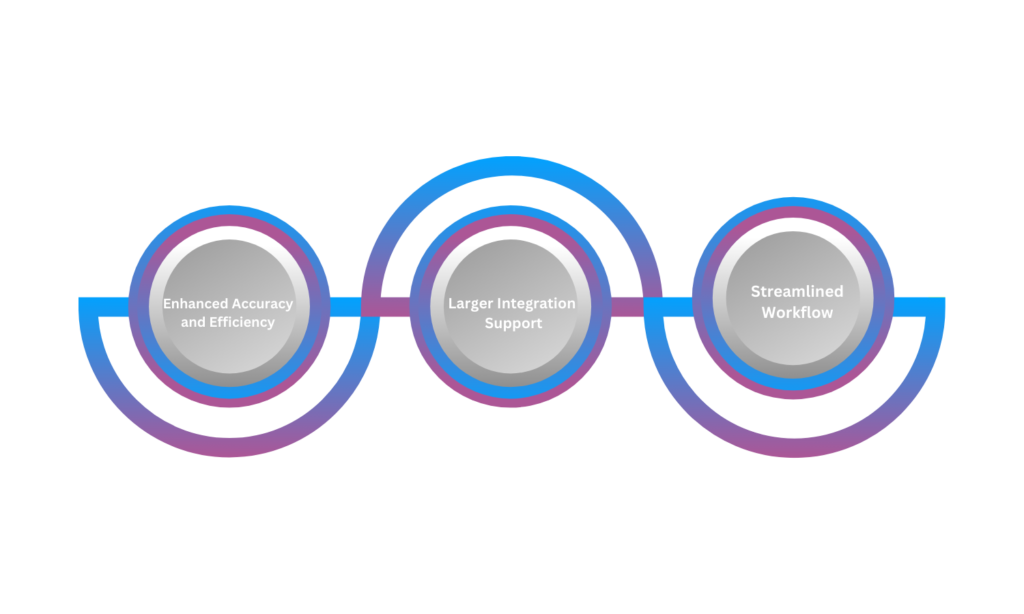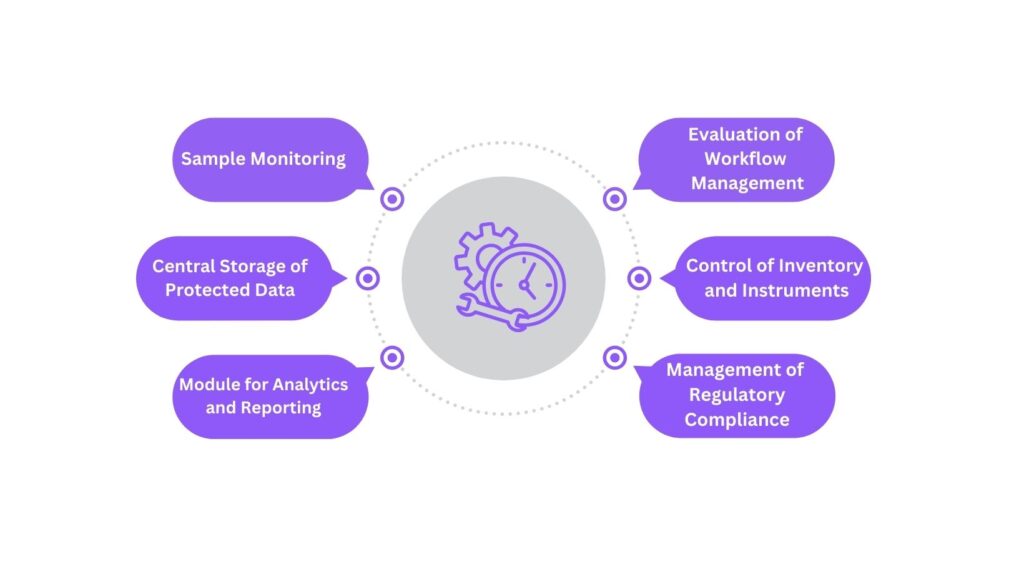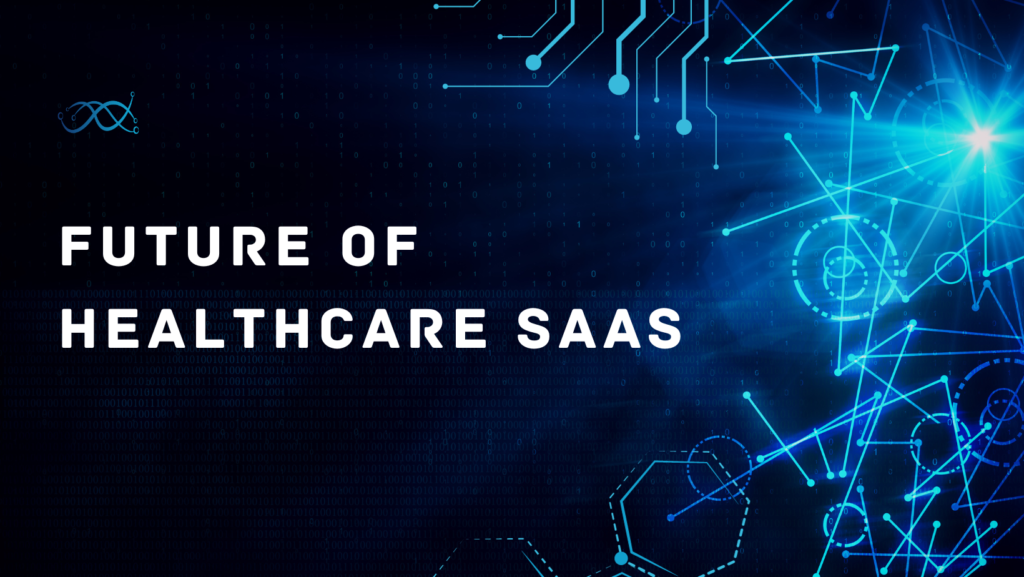A Laboratory Information Management System (LIMS) is a solution employed in laboratories to automate repetitive tasks and oversee the management of lab samples along with associated data. This system meticulously evaluates each stage of the process, commencing from the arrival of samples to the recording, storage, reporting, and archiving of data.
Owing to its effectiveness, the development of LIMS software finds applications in various sectors and industries, spanning public health, bioinformatics, chemical manufacturing, geoinformatics, and more. The widespread adoption of this software across diverse industries is highlighted by the projected global LIMS market value of $2.1 billion by 2026, with a compound annual growth rate (CAGR) of 13.2%, according to a report by MarketSandMarkets.
Healthcare LIMS Market Insights
Healthcare establishments in the United States receive approximately 14 billion lab test orders annually, and a significant 70% of medical decisions rely on the outcomes of these tests. Therefore, ensuring that medical lab results are dependable, efficient, and cost-effective is of utmost importance.
As indicated in a study by Data Bridge Market Research, the anticipated value of the global hospital LIMS market is $4.90 billion by 2029. This projection signifies a substantial Compound Annual Growth Rate (CAGR) of 20.55% for the forecast period spanning from 2022 to 2029.
3 Major Benefits of adopting a Healthcare LIMS

Enhanced Accuracy and Efficiency
The implementation of Laboratory Information Management Systems (LIMS) goes beyond the mere automation of laboratory processes. It eradicates the requirement for paper usage in labs, thereby enhancing throughput and ensuring data accuracy. Additionally, LIMS software development reduces turnaround times by eliminating manual procedures, providing regulatory auditors swift access to data while eliminating the risks associated with data loss or fraudulent reporting. Moreover, LIMS prohibits the utilization of outdated or miscalibrated equipment for analytical testing, further safeguarding the accuracy of results.
Larger Integration Support: Effective LIMS programs offer the capability to connect diverse laboratory instruments and applications, facilitating controlled activities and seamless data transmission. Integration control ensures the safety and security of data. Furthermore, to enhance resource planning and improve the effectiveness of data management, these programs can be seamlessly integrated with accounting software and enterprise resource planning (ERP) systems.
Streamlined Workflow
Leveraging LIMS software development in your laboratory accelerates workflows through continuous monitoring of task completion. The system meticulously tracks the tasks assigned by operators, enhancing efficiency. The integration of systems with lab information expedites internal operations, leading to reduced operational expenses.
Unlock Efficiency through Lab Task Automation with LIMS
Having established the benefits of an LIMS system for your healthcare business, the next question is: How does it operate? Let’s delve into the details in our upcoming section.
How Does a Lab Information Management Software Work?
For those involved in constructing a LIMS system, comprehending its user functionality is imperative. Irrespective of the industry where custom LIMS software is applied, it mandates adherence to a set of common steps. These steps are detailed below:
Register
The LIMS software journey begins with user registration, whether for a drug test, mineral check, or blood sample analysis. This foundational step ensures the subject’s official entry into the system, initiating a structured data management protocol. Registration acts as the gateway to various laboratory analyses, facilitating the systematic generation of labeled reports and establishing the groundwork for an organized workflow. Overall, it sets the stage for precise and efficient laboratory operations.
Prepare
After successful registration, the preparatory phase in the LIMS software initiates a series of internal entries and automated processes. This crucial stage activates application functionalities, converting raw data into formatted input tailored for analysis. Serving as a bridge between registration and in-depth analysis, preparatory processes lay the foundation for subsequent steps, optimizing data for accurate and insightful results. This streamlining enhances overall laboratory efficiency.
Allocate
Upon acquiring all the requisite data, the subsequent step involves the allocation of this information to distinct instruments and tools within the software. This allocation process ensures that each tool operates independently and concurrently, fostering an environment where multiple analyses can be conducted simultaneously. By distributing the workload among various instruments, the efficiency of report generation is markedly increased. This strategic allocation of data optimizes resource utilization, expediting the overall analysis process and contributing to the timely production of comprehensive reports.
Validate
If there exist dependencies among data provided by different tools in the preceding step, the system can be configured to address such intricacies. The validation process at this stage is crucial, ensuring that data received from various tools align with the sample data. By incorporating a validation mechanism, the system upholds the integrity of results, resolving dependencies and discrepancies. This meticulous validation step acts as a safeguard, guaranteeing the accuracy and reliability of the analytical outcomes, a vital assurance in the pursuit of precise laboratory analyses.
Approve and Retest
Following the thorough checking and validation of data, it undergoes labeling for final approval before being presented to the subject as a comprehensive report. In the event that any discrepancies emerge during internal validation, the data is subjected to a retest, requiring a complete analysis repetition. This iterative process continues until the data aligns with the appropriate validation limits or exhausts the predetermined number of trials. Any validation errors encountered are meticulously recorded in error logs, providing valuable insights for continuous refinement of the analysis process.
Report
Upon completing the data preparation phase, during which reports are labeled and sample data is attached, the LIMS software development starts generating templates. The finalized report, inclusive of comprehensive data from prior stages, is then either printed or shared via communication channels. This signifies the conclusion of the analytical workflow, presenting a tangible and communicable summary of the laboratory analysis outcomes.
Archive
Even after the software has delivered the report to the respective patient, the process doesn’t conclude. It is imperative to monitor and track the analyses conducted within the software. Consequently, the information is archived in the data center for meticulous record-keeping. Alternatively, the software can be configured to store this data in the institution’s cloud-based record center, ensuring a secure and accessible repository for future reference.
LIMS Capabilities and Features

When creating bespoke LIMS software, it is essential to contemplate the particular features and capabilities that align with the needs of your business. Here are some key aspects to consider:
Sample Monitoring:
Among the core functionalities of LIMS, sample monitoring stands out as indispensable. This function automates the process of tracking samples as they progress through the laboratory and various departments. By utilizing unique identifiers, the software establishes a digital trail, effectively eliminating the possibility of human errors. The custom LIMS software developed by your chosen agency must leverage the full potential of this feature.
Evaluation of Workflow Management:
A pivotal feature of LIMS lies in its capacity to optimize and streamline workflows, resulting in significant time savings. The automation of record-keeping alleviates the need for a separate process to manage records. Once the system’s design and principles are established, it autonomously makes decisions and allocates tasks to the relevant tools and instruments. It possesses the capability to oversee the entire process independently, eliminating the necessity for explicit instructions regarding the subsequent steps.
Central Storage of Protected Data:
Every LIMS system must comply with industry-standard data storage practices. Test results mustn’t be amalgamated with personally identifiable information (PII), and the system must meet stringent security standards to prevent any potential data breaches. Furthermore, the system needs to ensure swift and reliable performance, guaranteeing that the productivity of your laboratory remains unaffected.
Control of Inventory and Instruments:
Maintain an ample supply of test materials and chemicals in your laboratory to mitigate potential delays. The software is equipped to issue automatic alerts as soon as replenishment becomes necessary. Furthermore, your LIMS can actively monitor the condition of equipment and promptly initiate maintenance procedures.
Module for Analytics and Reporting
Employing this feature minimizes manual efforts and enhances laboratory productivity. Effortlessly export your data, allowing internal departments or external clients who have requested testing to retrieve it. Leverage advanced analytics to extract valuable insights from your data, uncovering information related to demographics, health issues, or the operational costs of your facility.
Management of Regulatory Compliance
Given the extensive regulations within the healthcare sector, manually tracking every requirement can be highly time-consuming. Opt for a lab management system equipped with integrated compliance tools, and ensure regular updates to mitigate the risk of legal issues. Further details on compliance will be explored in the subsequent sections for a more comprehensive understanding.
How to Build a Lab Information Management System?
Constructing a Lab Information Management System is crucial for maintaining a seamless workflow in your laboratory. Delving into the intricacies of developing a successful LIMS is essential for ensuring operational efficiency.
Define Your IT System
Ensure that the capabilities and features of your LIMS align with the specific requirements of your organization. While the development of a custom solution may incur higher costs, it is better tailored to the laboratory’s objectives. Key factors to contemplate when crafting an IT infrastructure include:
Budget:
Establish a comprehensive budget by formulating a funding plan that encompasses technical support, implementation, and the development of the LIMS application. This financial roadmap ensures adequate resources are allocated for the seamless execution of your laboratory information management system.
Functions:Determine the essential functions required to execute laboratory operations by identifying fundamental competencies. This crucial step ensures a clear understanding of the core capabilities necessary for the effective functioning of your laboratory, facilitating streamlined and efficient processes
The number of users:
Define the user count by specifying the number of staff members who will be granted access to the system. This ensures a tailored approach to accommodate the specific user needs, contributing to a well-scaled implementation of the Lab Information Management System.
Sample observation:
Choose the optimal custom solution based on industry-specific requirements for sample observation. Tailoring the LIMS to your industry’s particulars ensures an effective and precise system that aligns seamlessly with your sample monitoring needs.
When selecting new features, it is essential to contemplate the utilization of LIMS. It may be necessary for unconventional laboratory processes, such as integrated tools for managing contractual relationships.
Find a Development Partner
To create your customized LIMS software, it is essential to partner with an IT team or a software development company. They can seamlessly incorporate your specified requirements, tailoring the software to your unique needs. A LIMS vendor may offer services such as providing a demo version, detailing implementation and revision costs, integrating tools, and ensuring regular updates for their LIMS software development services.
Enumerating the technical prerequisites of your project facilitates a clear understanding for the IT team, serving as explicit criteria for software development and forming the basis for the final product assessment. This documentation should encompass the project’s work strategy, intended applications for LIMS, as well as the project’s conditions and costs.
Set the Design Layout
Through brainstorming and visualization, gain clarity on the desired design layout for your LIMS. During this phase, assess the design, engage in discussions about the graphical user interface, and finalize any additional features for the software. Tailoring screens, navigation spaces, and simulating the user journey are integral aspects of the design process.
Test Your Software
Despite meticulous planning, unforeseen issues and additional requirements may surface. Prior to the official launch, it is imperative to thoroughly test each feature and ensure its accuracy.
The software development company you engage in is likely to employ a team of Quality Assurance engineers responsible for identifying system issues before deployment. They will also assess the software’s adherence to legal regulations and industry standards.
Prepare for Launch
After conducting functional tests on the LIMS, it becomes crucial to train staff and establish the network and hardware infrastructure. Agree upon implementation dates with both the customer and staff. Begin by outlining a comprehensive plan to address the following aspects:
- Lab Downtime
- Transitioning ongoing activities to the new platform
- User engagement during the system startup
- Post-deployment support
How Much Does It Cost to Build an LIMS Software?
The costs associated with LIMS solutions exhibit variations based on factors such as the type of LIMS being constructed, your existing IT infrastructure, the user count, and crucially, your distinct goals and specifications.
However, LIMS software can be categorized into three groups based on its objectives:
Data Organization:
This category, focusing on organizing the lab’s sample inventory, is the most straightforward to implement. It offers basic sample traceability permissions, making it a cost-effective option. The estimated cost for implementing this LIMS ranges from $15,000 to $45,000, and the development timeframe typically spans 3 to 6 weeks.
Process Automation:
This LIMS implementation encompasses all the functionalities of data organization, with additional configurations for automating manual processes within the workflow. The cost is contingent on the number of processes you choose to automate, with an approximate range falling between $30,000 to $70,000.
Digital Transformation:
Implementing digital transformation is a complex undertaking, as it integrates multiple departments within the laboratory. This comprehensive type manages all data, spanning from the commercial front-end to the laboratory back-end, and some versions can even handle invoicing if configured accordingly. Due to the intricate technology required for building this LIMS type, the development timeline is more extended, ranging from approximately 4 to 9 months, with an estimated cost between $60,000 to $200,000.
How can Digiatto IT services Help in Building a Robust LIMS for Your Business?
Exploring Digiatto IT services’ 7+ years of experience reveals a track record of delivering transformative digital healthcare solutions that have had a lasting impact on clients’ businesses. The process at Digiatto IT services is straightforward and transparent, even when dealing with complex issues. We delve deep into the core of the problem, comprehend your business market, and leverage those insights to conceptualize, design, develop, and deploy a tailored solution for your unique needs.
Digiatto IT services has also contributed to the development of the YouCOMM app, a multi-request application linking in-hospital patients directly with nurses for immediate assistance. In response to the inefficiency of traditional bell-call systems, Digiatto IT services devised a solution that enables patients to communicate their needs conveniently. The YouCOMM app features a voice-controlled, multi-lingual, and multi-accent system, enhancing communication between patients and nursing staff.
If you are seeking a healthcare software development company similar to Digiatto Services to embark on creating a LIMS solution for your organization, now is the opportune moment to get in touch with us.
FAQs
Why should your business rely on LIMS?
Embracing a Laboratory Information Management System (LIMS) is essential for optimizing analytical workflows in your business. LIMS offers an automated solution that enhances efficiency, speed, and maintains a superior level of quality in analytical processes. Unlike other software, LIMS is highly adaptable, allowing customization to align precisely with your lab’s unique needs and specifications. The introduction of LIMS not only simplifies tasks but also ensures increased reliability in laboratory operations, making it an indispensable tool for streamlined and dependable workflows.
What is the typical duration for implementing an LIMS solution?
The timeframe for developing a custom healthcare LIMS software development solution is primarily influenced by factors such as the solution’s scope and complexity, the number and locations of labs or teams involved, and the pace at which the customer can progress. However, with a highly skilled team and a well-structured development and deployment strategy, it is possible to build a LIMS in a matter of weeks, as opposed to the conventional timeframe of a few months.
Is it feasible to integrate LIMS with other systems?
Absolutely! Integrating your LIMS software with lab equipment and diverse applications facilitates smooth data transfer, simplifying the coordination of various components in the report-making process and consolidating them to generate the final reports.


